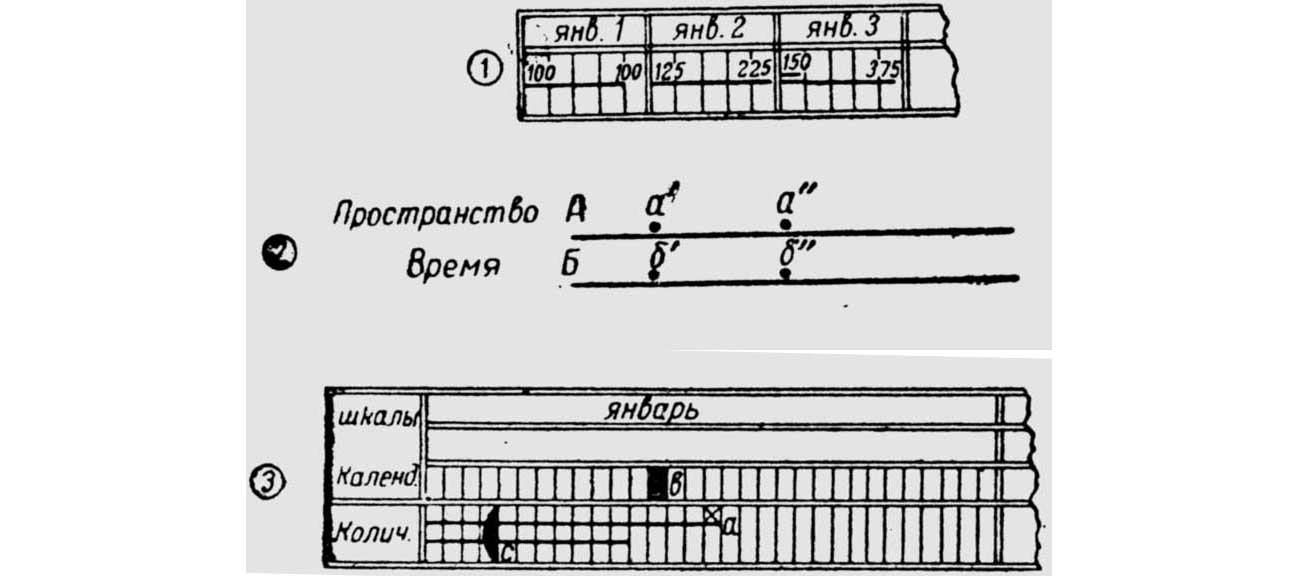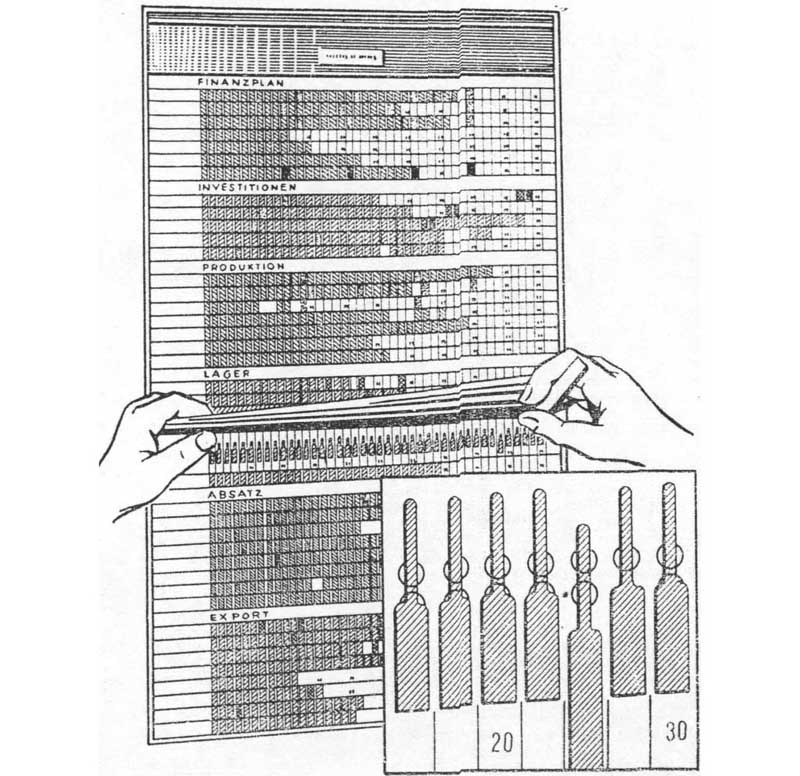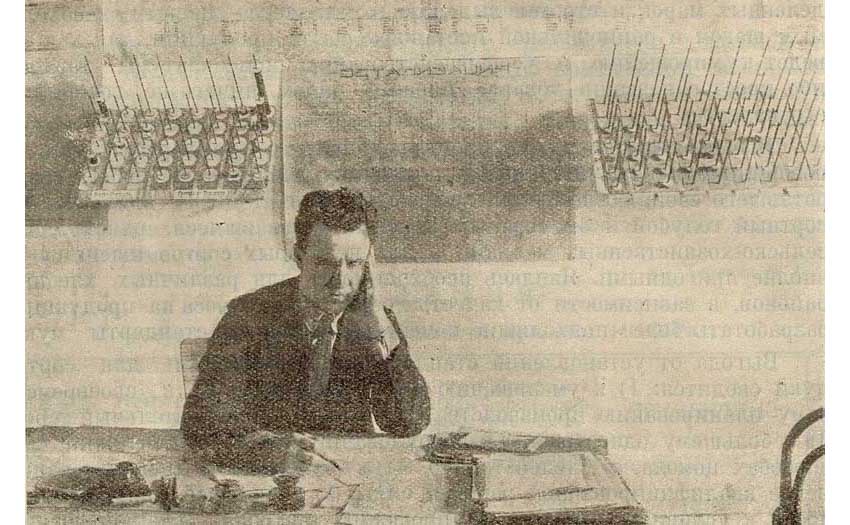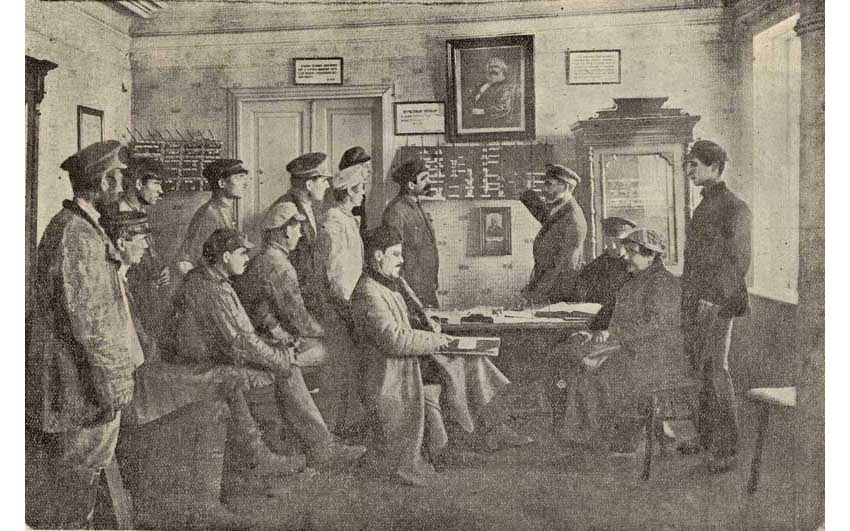Charts in accounting. Half a century before Excel

Today's retro review is devoted to graphs, generally visual presentation of data in accounting.
Do you know what accountants used half a century before Excel?
What-what-they used the same graphics, only drew them by hand.
However, schedules were rarely used in accounting, one might say that until the twentieth century they were not used at all.
In the twentieth century, use was also limited. Already in Soviet times, visual agitation slipped through - such, for example:

Sometimes there were diagrams, but also by necessity - not from a good life:

Agree, it is much more convenient to present such information not in numbers, but in the form of a diagram.
In these years, to which the presented illustrations relate, at the end of the 1920s - beginning of the 1930s, another bookkeeping happened in accounting.
The named period is my favorite, the period of accounting oddities associated with the arrival of a generation of Soviet people in science. These Soviet scholars, often from plow, were not wise by bourgeois education, but no less ardently and sincerely than their pre-revolutionary predecessors, longed for discoveries and inventions. I have already reported on some inventions, in particular, on copy boards and file cabinets. Against this background, the fascination with the graphical presentation of the data seemed innocent and almost imperceptible fun, however, it existed and was widely advertised. Special literature came out:


What did these books and many others offer?
First of all, they advertised graphic methods. It's so cool, just a squeak of the season - to perceive the data in graphical form. The main thing is intelligible: you look at the chart and you can immediately see whether it is crawling up or down.
From this point of view, it is important that the schedule is visual. That is, certain types of graphs - and their inventors, needless to say - competed for greater visibility. Here, out of competition was the American G.L. Gantt with charts of your name. I don’t dare to judge how they differed from the others (maybe Gant was the first to come up with a plan to reflect the implementation of the plan?), But the fact remains.
Here's how - no wonder, from my point of view - Gantt charts looked:


As always in such situations, a lot of people who immediately wanted to develop and improve stood out from the public.
Judging by the original source, this is the introduction of the coordinates of time and space into the Gantt chart using the Vanzetti method. Do you understand anything?

And here is a special shield for the Gantt chart: did you have to hang Gantt charts somewhere, really?

But of course, other inventors of charts, both foreign and domestic, came across.
Schedule G.D. Babcock. According to the source, it consisted of four bands (tapes): tapes of operations, tapes of working days, tapes of calendar days, tapes of release.

And this is an oblique graph of our compatriot D.D. Boginsky, was used in the metal industry.

Again, I will not venture to assess what his innovation is, let the experts understand.
People have not changed since the 1930s (so much time has not passed to change), and the requirements for accounting are the same. Modern practices taldychat with the same persistence: let it be clear, let it be clear. The graphs with their creeping up and down lines on this side are very helpful: they are understandable or create the appearance of understanding, it doesn’t matter. It is important that computer programs allow you to get a variety of graphics without visible effort.
However, fifty or more years ago, there was a lot of stress with computers; to generate graphs, we had to use another technique - the so-called control boards. Such a board was hung somewhere in the corridor of the institution, and the employees passing by could see in graphical form which unit was fulfilling the plan as far as it was going. And affordable, and, again, a social event.
Employees of the Institute for Scientific Organization of Production, the city of Taganrog, at the control board. Management work is in full swing.

Here are the samples of this technique that I found:






The last picture shows the control board of an accountant (very good, by the way) B.M. Volkenstein.
And here, apparently, the desktop device is the diagrammer of the pole K. Adametsky.

Of the ways to visualize the data, I can also mention - let not graphs, but cartograms. Also a very visual device, especially for enterprises with an extensive branch network. To such cartograms, even special pins were issued.


Finally, the cherished is my favorite. He dug himself in an old book, scanned, mentioned in the works. I did not boast on Habré, I hasten to correct a mistake.
Reporting device "Stream System", the invention of engineer Pavel Matveevich Esmansky and the team of the Institute for Scientific Organization of Production (INOP) mentioned above.


I explain: there is a balance in front of you (although with the swapped assets and liabilities - it is not clear why). The number of dies threaded into the pins indicate the amount. That is, there is a mediocre balance sheet, but - three-dimensional, therefore extremely visual.
You may ask why the rope is drawn through the pins. In my innocence I thought: in order to move the dice along the rope. Then they explained to me that I was an idiot, because the rope goes through the pin through, you can’t move the die along the rope. I scratched my head and had to agree.
To find out what the rope was for, I had to stomp into the library again for a book.
Why do you think the rope is? I’ll tell you later, but for now, look at historical evidence of how effectively the reporting system “Stream System” was used in practice.
In the office of the Chair of INOP: An

emergency meeting of the members of the Council of INOP:

Cabinet of the authorized INOP in Rostov-on-Don:

Meeting of the board of the trust of INOP:

Accountant of the INOP mill uses visual agitation:

It happened.
By the way, instead of control boards and pins with dies, projectors of various designs were used to achieve clarity. This projector was called a reflectoscope:

Of course, projectors were used to demonstrate not only graphs, but also other images - as they are now expressed, for presentations.
Since the late 1930s. enthusiasm for charts, as happened with all accounting bziki, began to decline. Although periodicals from time to time still published notes like this one, from the journal “Accounting and Finance on Collective Farms” for 1937:

Oddly enough, charts unexpectedly became fashionable in the post-war years, although for a very short time, literally two or three years, thanks the efforts of one Saratov professor, A.I. Lozinsky.
Here is a photograph from his post-war graphic study guide:

Since the late 1940s. the use of graphs in accounting, let's say, returned to normal.
Yes, I almost forgot. I promised to open your eyes to the use of a rope in the reporting system “Stream System” of the Taganrog Institute of Scientific Organization of Production.
It's simple: the rope was used to seal the device (the seal is visible in the upper right corner, if you look closely). A pest creeps into the office of the director of the mill in order to distort the reporting data, and the device is sealed. Imagine what a bummer for a vile enemy.
So, with the help of vigilance and working ingenuity, Soviet inventors thwarted the cunning plans of the enemy.
